I am implementing a geometric theorem prover in Sicstus Prolog; and in order to get over the problem of backtracking over I/O, I am using a meta-interpreter. This last however does not seem to handle cuts as expected.
My meta-interpreter looks like the following. The first argument to solve/5 is the goal to be evaluated, the second and third arguments allow me to control the search depth, and the fourth and fifth arguments are for handling backtracking over output.
solve(true,_,_, O, O) :-
!.
solve(_,CurrentDepth,DepthLimit, _, _) :-
CurrentDepth > DepthLimit,
!,
fail.
solve(nl,_,_, O, [nl|O]):- !.
solve(write(X),_,_, O, [X|O]):- !.
solve((A,B),CurrentDepth,DepthLimit, O0, O2) :-
!,
solve(A,CurrentDepth,DepthLimit, O0, O1),
solve(B,CurrentDepth,DepthLimit, O1, O2).
solve((A;B),CurrentDepth,DepthLimit, O0, O2) :-
!,
(
(solve(A,CurrentDepth,DepthLimit, O0, O2);
solve(B,CurrentDepth,DepthLimit, O0, O2))
).
solve(A,_,_, O, O) :-
(
predicate_property(A, built_in);
predicate_property(A, imported_from(lists))
),
!,
call(A).
solve(Goal,CurrentDepth,DepthLimit, O0, O1) :-
!,
predicate_property(Goal, interpreted),!,
NewDepth is CurrentDepth+1,!,
clause(Goal,SubGoals),
solve(SubGoals,NewDepth,DepthLimit, O0, O1).
I have followed the instructions in the thread Implementing cut in tracing meta interpreter prolog and changed the meta-interpreter to the following.
solve(true,_,_, O, O) :-
!.
solve(_,CurrentDepth,DepthLimit, _, _) :-
CurrentDepth > DepthLimit,
!,
fail.
solve(nl,_,_, O, [nl|O]):- !.
solve(write(X),_,_, O, [X|O]):- !.
solve(!, _,_,_,_):- !, ( true ; throw(cut)).
solve((A,B),CurrentDepth,DepthLimit, O0, O2) :-
!,
solve(A,CurrentDepth,DepthLimit, O0, O1),
solve(B,CurrentDepth,DepthLimit, O1, O2).
solve((A;B),CurrentDepth,DepthLimit, O0, O2) :-
!,
(
(solve(A,CurrentDepth,DepthLimit, O0, O2);
solve(B,CurrentDepth,DepthLimit, O0, O2))
).
solve(A,_,_, O, O) :-
(
predicate_property(A, built_in);
predicate_property(A, imported_from(lists))
),
!,
call(A).
solve(Goal,CurrentDepth,DepthLimit, O0, O1) :-
!,
predicate_property(Goal, interpreted),!,
NewDepth is CurrentDepth+1,!,
clause(Goal,SubGoals),
catch(
(
solve(SubGoals,NewDepth,DepthLimit, O0, O1)
),
cut,
fail
).
However now, solve/5 fails for some of the problems fed to the theorem prover. It is worth noting that I do not have any of the predicates call/1, catch/3, or throw/1 in my theorem prover. An example problem is the following.
:- dynamic test_goal/2.
:- dynamic predicate_with_small_depth/2.
:- dynamic predicate_with_large_depth/2.
:- dynamic p_1/2.
:- dynamic p_2/2.
:- dynamic p_3/2.
:- dynamic p_4/2.
:- dynamic p_5/2.
test_goal(X,Y):-
predicate_with_small_depth(X,Y),!,
predicate_with_large_depth(X,Y).
predicate_with_small_depth(X,Y):-
X < Y,
write('Small Depth Outcome 1'), nl.
predicate_with_small_depth(X,Y):-
X > Y,
write('Small Depth Outcome 2'), nl.
predicate_with_large_depth(X,Y):-
p_1(X,Y).
p_1(X,Y):- p_2(X,Y).
p_2(X,Y):- p_3(X,Y).
p_3(X,Y):- p_4(X,Y).
p_4(X,Y):- p_5(X,Y).
p_5(X,Y):-
predicate_with_small_depth(X,Y),!,
write('Large Depth Outcome: '), write(X), write(' '), write(Y), nl.
If the goal solve(test_goal(1,2),0,8,O1,O2) is evaluated, Prolog's answer using the modified meta-interpreter is:
O2 = [nl,2,' ',1,'Large Depth Outcome: '|_A] ?
but the answer should be
O2 = [nl,2,' ',1,'Large Depth Outcome: ',nl,'Small Depth Outcome 1',nl,'Small Depth Outcome 1'|O1] ?
which is the one given by my meta-interpreter prior to adding the cut adaptation.
Does the new meta-interpreter implementation look correct in terms of handling the cut operator?
Many thanks.
EDIT
In trying to identify the problem set and way to solve the problems in the comments below the following was made apparent:
the TGTP contains the kind of problems that my program tackles
Geometric Theorem Proving by Pedro Quaresma, Days in Logic 2012, University of Evora, 6-8 February 2012
(Gelernter's work) best capture my program.
Slies: 27/99
and 28/99
also
The cut is necessary for me as it allows the program to stop working on alternative solutions of a given goal once one solution is found. For example, if I have
prove(X):-(p1(X),!);(p2(X),!);p3(X), if p1(X) is satisfiable,
I do not want other solutions via p2/1 and p3/1 to be found. This saves a lot of computation.

